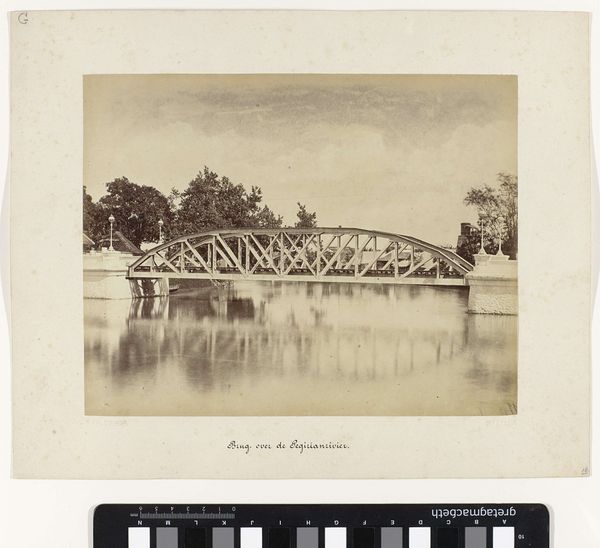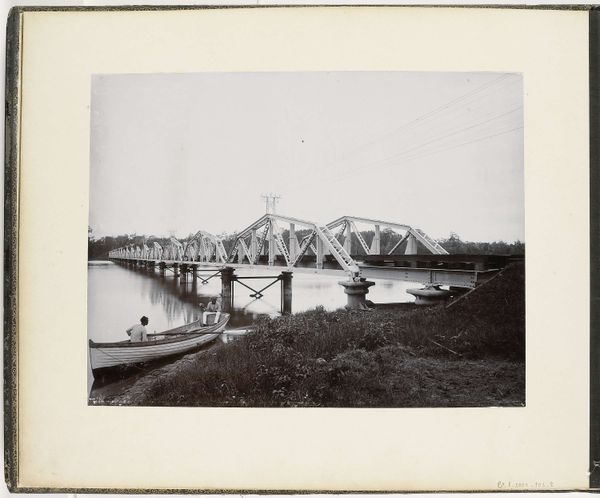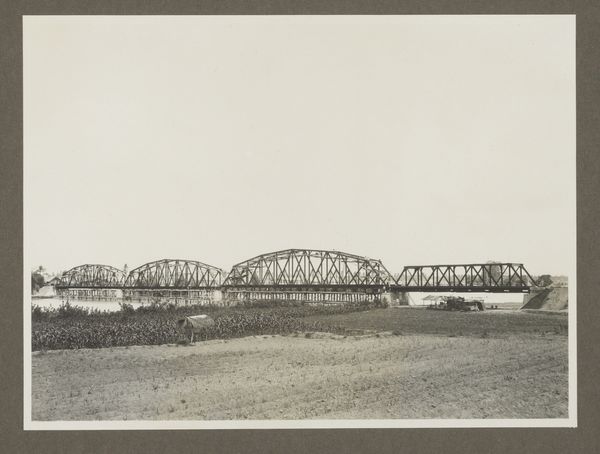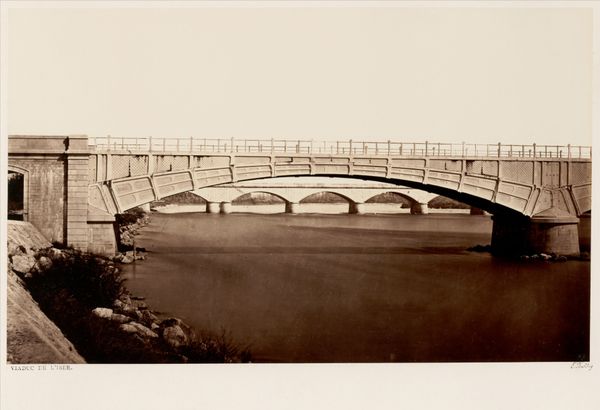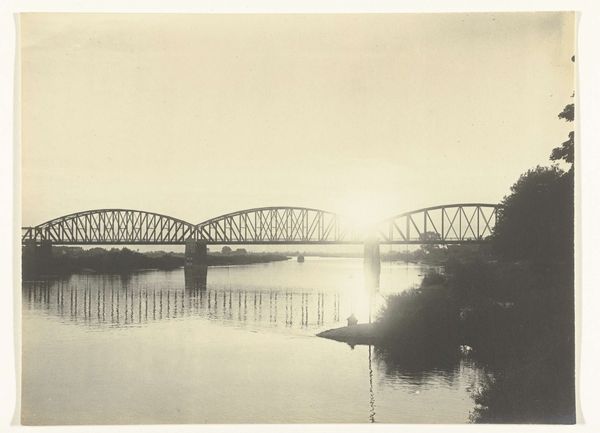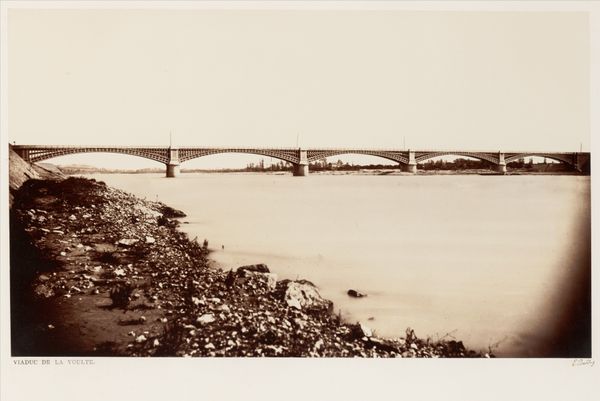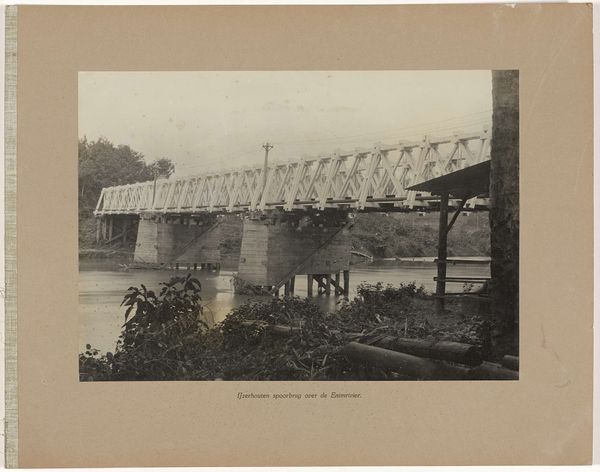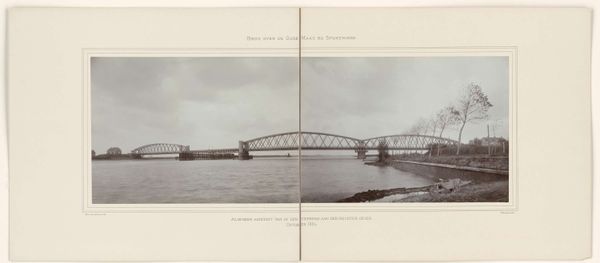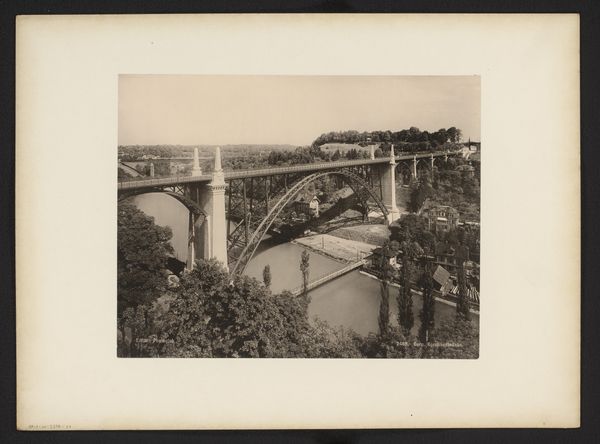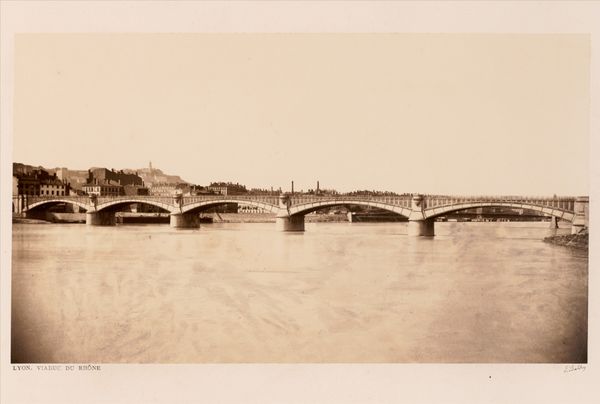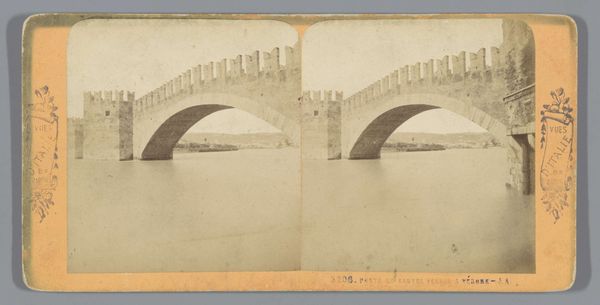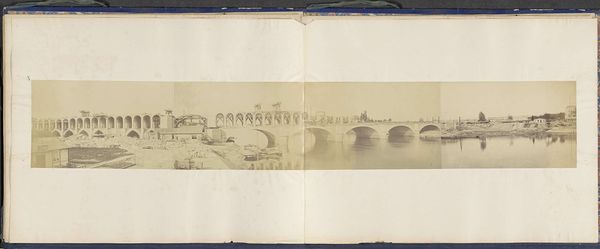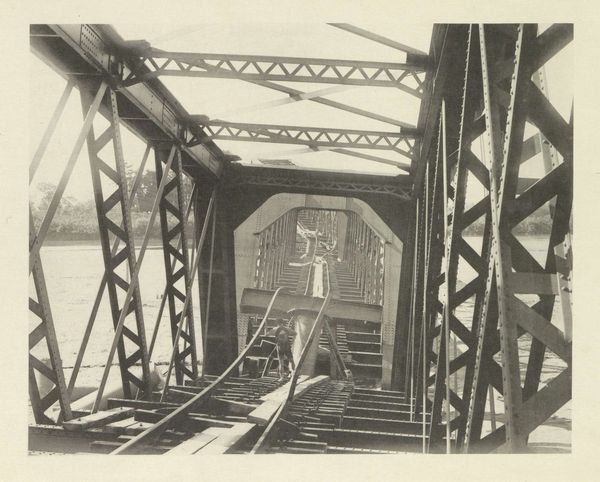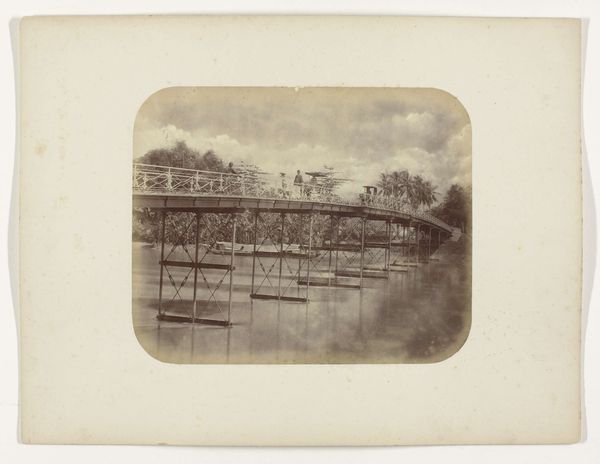
photography, albumen-print
#
landscape
#
archive photography
#
photography
#
historical photography
#
cityscape
#
albumen-print
#
monochrome
Dimensions: height 215 mm, width 275 mm, height 300 mm, width 370 mm
Copyright: Rijks Museum: Open Domain
Curator: This albumen print, titled "Brug over Madioenrivier," or "Bridge over the Madioen River," comes to us from the lens of Herman Salzwedel, sometime between 1880 and 1888. Editor: It's immediately striking. The heavy stillness, that monochrome palette… it feels like peering into a ghost. Curator: Indeed. This photographic rendering emphasizes human intervention, you could say, the ambition to connect and cross. The river bends and the bridge stretches out horizontally into the distance. But for whom was that connection and who was allowed access to this structure? Editor: Yes, precisely. We see progress, infrastructure, the steam engine making its slow chug across. But who financed it, and whose backs broke to build it? How does its presence affect the surrounding communities? And even what was the social effect of introducing an imposing technology that literally dwarfed the landscape? The albumen print feels more of a sociopolitical commentary here, an ode to modernity with shadows of social change lurking just below the surface. Curator: The choice of photography itself is quite interesting here. Given the rise of industrialization in Europe at that time, did this colonial gaze serve to simply catalog the 'progress' or also to assert control of these spaces? The composition has an immediacy about it. It's crisp, detailed. What stories could those archival photons reveal if we zoomed in close enough, as if each is like a time machine carrying within it echoes of laughter, toil, and perhaps resistance. Editor: And that interplay of light and shadow too...notice how it gives depth not only to the river below, but it serves to obscure as much as it illuminates. Was that bridge facilitating interaction or was it another tool for control? Its beauty has to coexist with a discomforting truth. Curator: Absolutely. And that duality allows us to both appreciate its compositional balance while still being alert to historical awareness and asking how technological advancements change societal relationships. Editor: So the picture, or this particular bridge as captured on photographic paper, prompts us to examine not only our concept of infrastructural progress, but more importantly, how to promote access and growth for all.
Comments
No comments
Be the first to comment and join the conversation on the ultimate creative platform.
